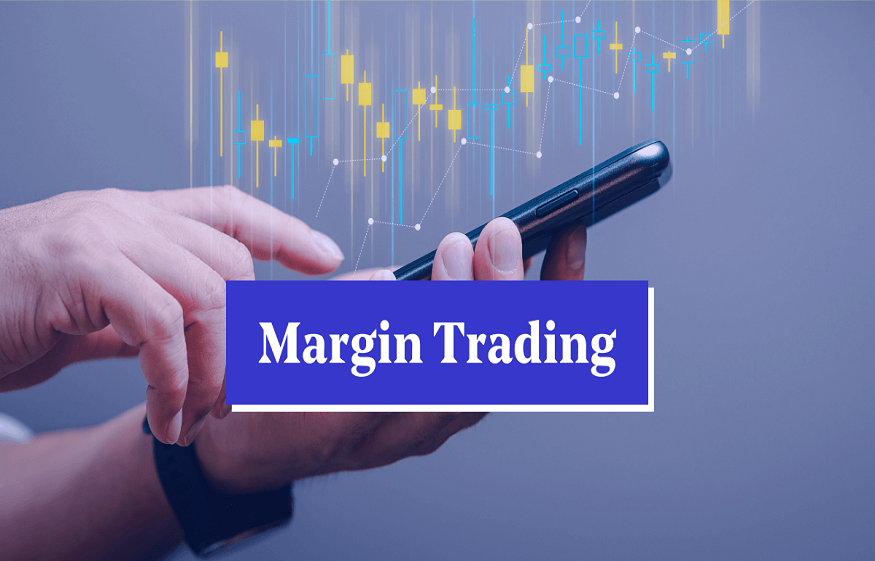Trading on margin, trading financial products with leverage
Very popular in the Forex market, margin trading consists of purchasing financial assets by mobilizing only a fraction of the capital usually required.
Start Trading on Margin
To adjust his level of risk and his potential for profit, a Trader manages the size of his positions with precision on a daily basis. On a traditional account, the size of transactions remains limited to the money deposited in the account, which can sometimes prove frustrating when the asset in which the investor is entering a position changes little. On a margin trading account, it is however possible to trade financial products with a greater degree of freedom since the size of the positions can this time exceed (under certain conditions) the sums of money deposited into your account. .
The Basics of Margin Trading
In practice, the investor must open a margin trading account to be able to carry out leveraged trades . He can then open positions whose amounts exceed the sums deposited and immobilized in his Margin Trading account.
The investor and the broker enter into an agreement before opening the margin trading account to establish its specifics. The amounts of the initial margin, the minimum margin or the maintenance margin are then defined to limit the investor’s default risk as much as possible. The loan granted by the broker also comes with commissions and conditions to be respected.
The key concepts of margin trading
The initial margin
The initial margin is the percentage of the purchase price of the assets that the Trader must have in order to open a position.
In the case where a trader wishes to buy 100 shares listed at €150 per share, the total cost of this operation is €15,000. Considering a required initial margin of 50%, the investor can therefore carry out this operation if he deposits half of this sum, i.e. €7,500. He then uses 2 to 1 leverage which can double his losses or gains.
In the case of CFDs , initial margins can reach margin levels of 5%, or a leverage of 20. The Trader can thus open a position worth €10,000 with just €500.
The maintenance margin
Maintenance margin is the minimum amount of capital that must be present at all times in a margin trading account so that positions are not closed.If the value
the available margin (not used to cover the risk of another position) falls below the minimum maintenance level, the investor is the victim of a margin call, the famous “margin call”. The investor is then required to make a deposit of funds or to resell part of the assets he holds in his account. Failing this, the broker can on its own initiative liquidate the investor’s open position in order to restore its maintenance margin.
The advantages of margin trading
Trading on margin allows you to adapt your risk taking to market volatility. Thanks to the leverage effect, the Trader can in fact exploit price variations which would be of little interest if they were exploited with spot positions. The fluctuations in the Forex market are the perfect illustration of this. In this market, daily fluctuations are generally relatively small. The use of leverage therefore makes it possible to make them more significant.
, if leverage allows you to multiply your profits by increasing the size of your positions, it can also be used to limit the sums of your positions as much as possible. money tied up in a Trading account. Thanks to the leverage effect, rather than tying up all the sums necessary to open a spot position, the Trader only uses a fraction. He is then free to invest the “liberated” money in other profitable investments.
The Disadvantages of Margin Trading
Despite the multiple advantages of Margin Trading, there is a price to pay for Traders using this type of investment. Indeed, the increase in return potential is necessarily accompanied by an increase in risk-taking. If gains can be multiplied, losses can be multiplied as well, and in certain market scenarios, it is even possible for the Trader to record losses greater than the maintenance margins locked into his account. It is therefore better to use leverage with the greatest caution and adopt rigorous and precise risk management rules.
the increase in risks, leveraged products are also accompanied by slightly higher commissions. higher than products purchased outright. If the latter are perfectly suited to scalping or Day Trading, they therefore respond quite poorly to the challenges of long-term investment.
Hedging yourself with margin trading
If margin trading meets the expectations of speculators, it also adapts perfectly to investors wishing to reduce their exposure to risk by implementing hedging strategies.Margin trading accounts make it possible to
sell short certain financial assets in order to make money when their prices fall. It is therefore entirely possible for an investor holding a portfolio of shares (on a PEA or a securities account) to also open short positions on CFDs in order to neutralize all or part of their exposure to risk. The performance of its stock portfolio is then offset (hedged) by the performance of its Margin Trading account. Margin Trading To fully and calmly benefit from its capabilities, it is better, however, to take the time to study how it works in detail and test its strategies on a demo Trading account before moving on to a real Trading account.













Post Comment
You must be logged in to post a comment.